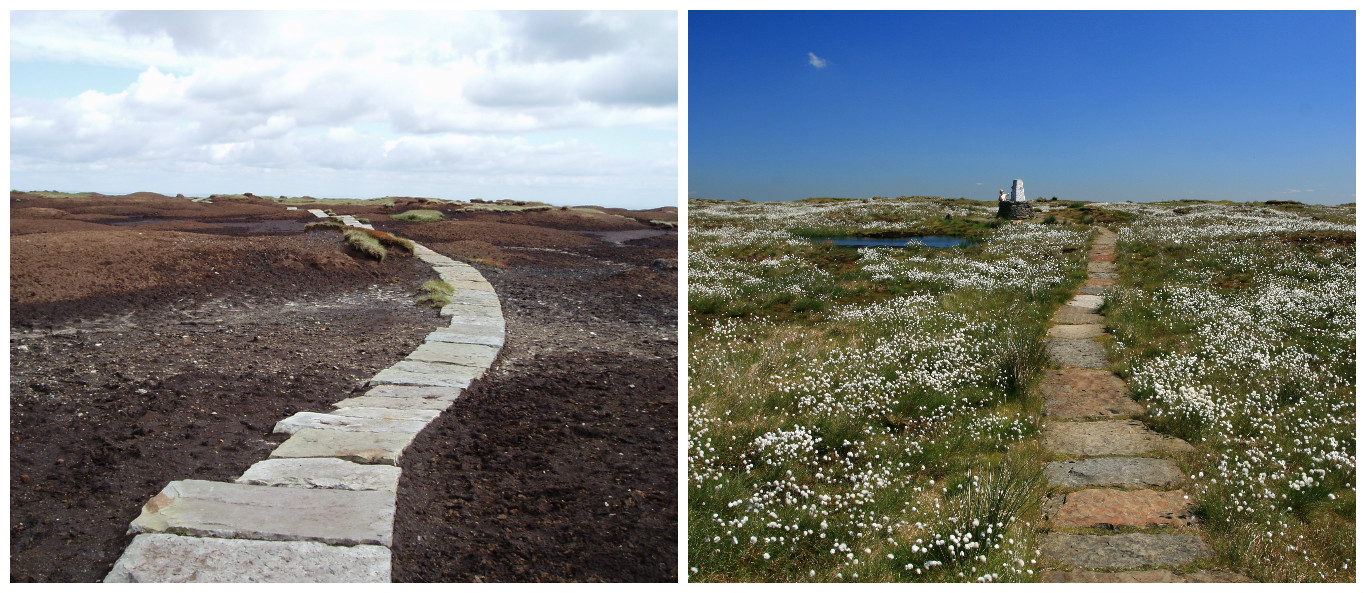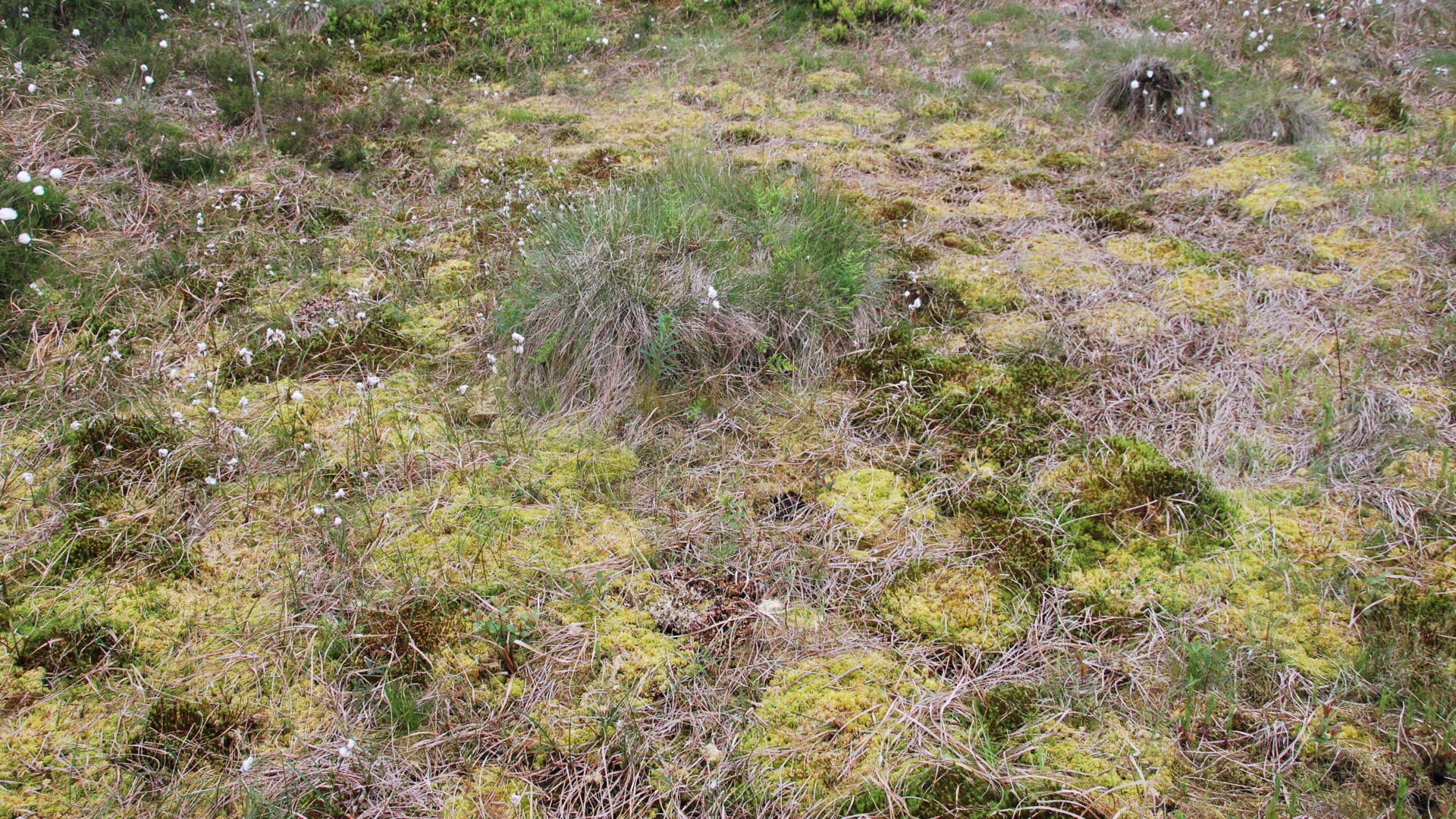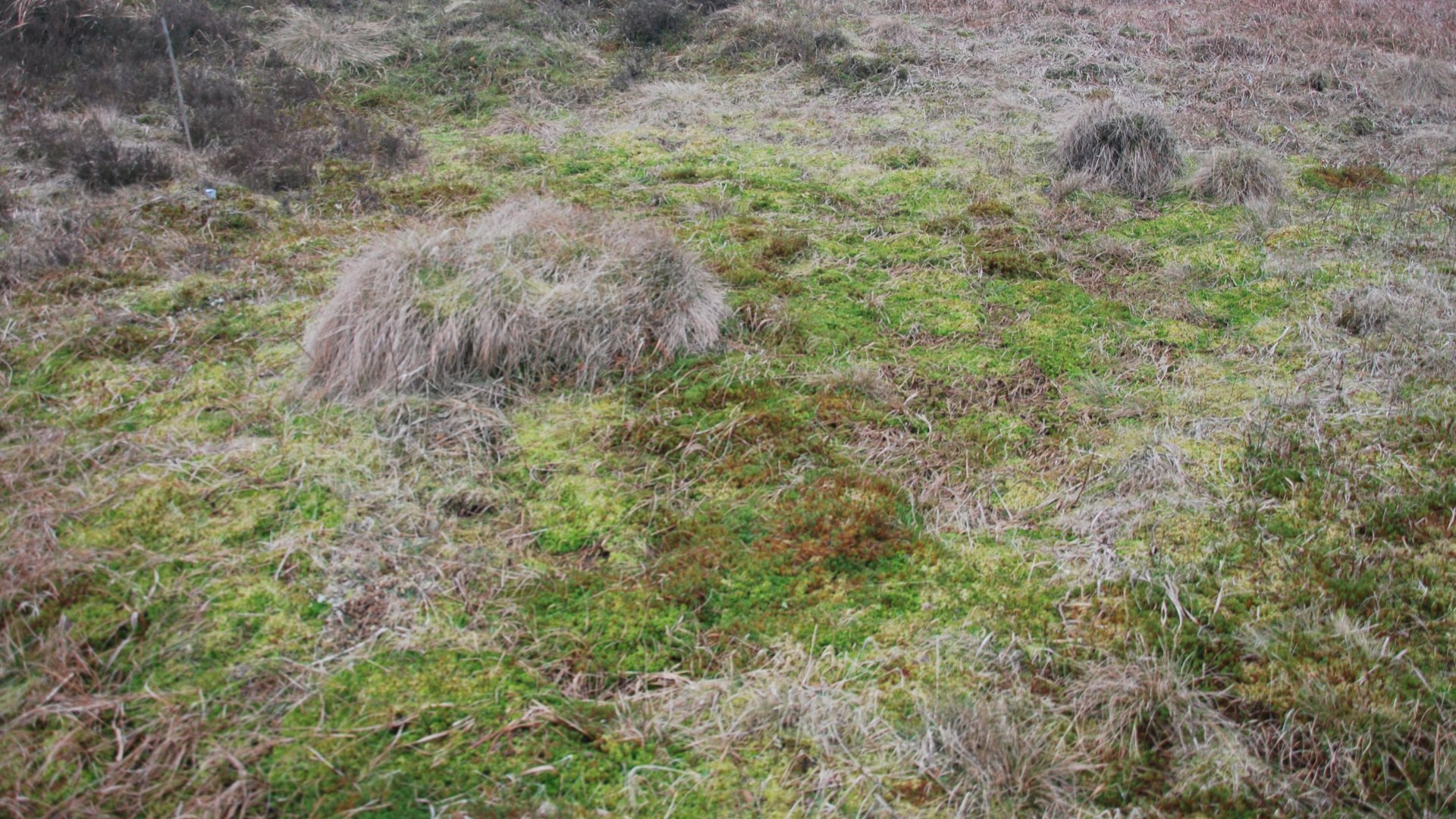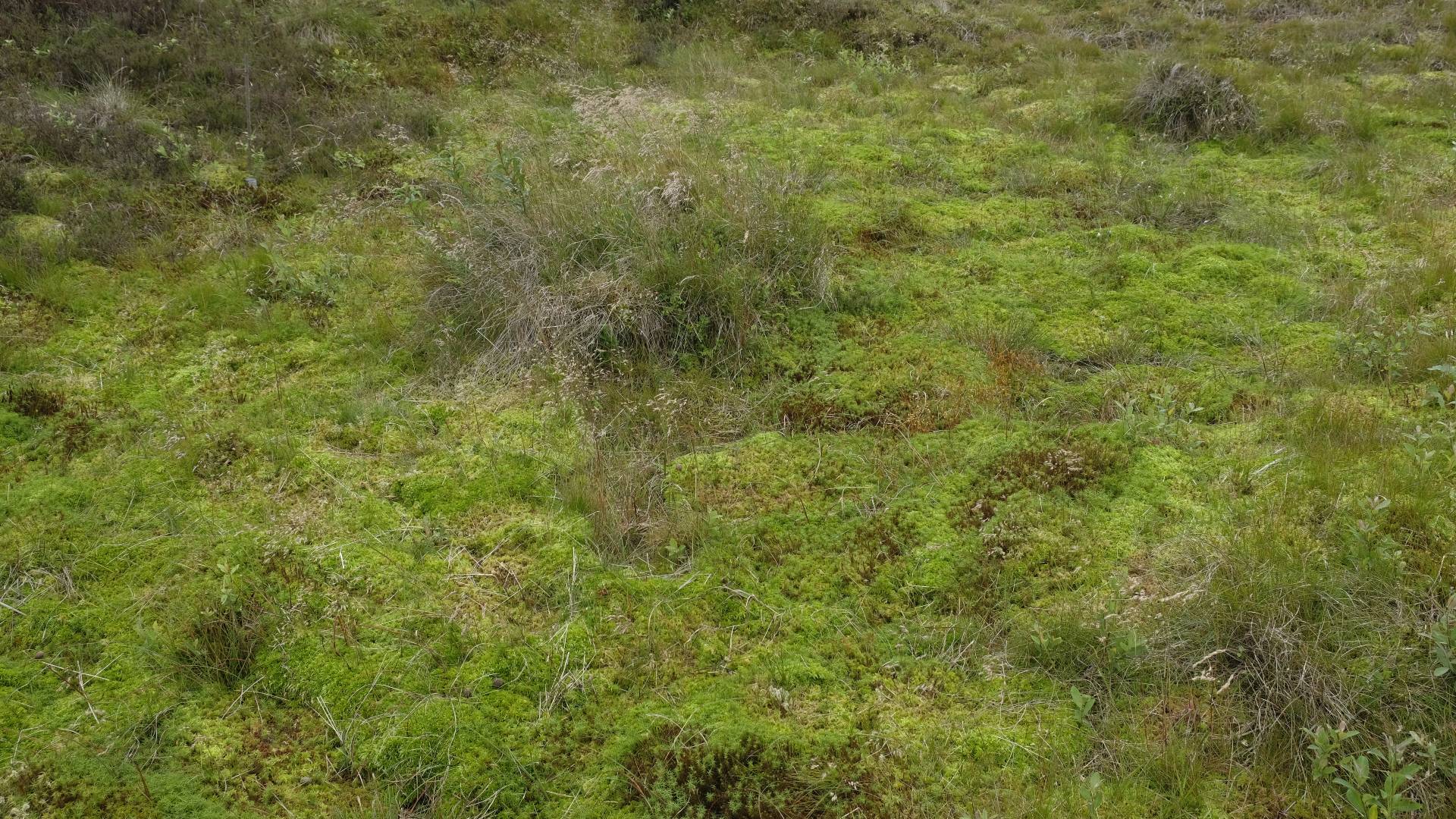Stalybridge before and after
These fixed-point photos were taken about a year apart, in autumn 2018 and then in autumn 2019, at the site of the huge fire that took place in the summer of 2018 on the moors near Stalybridge (often referred to as the Saddleworth Moor fire).
You can see the black bare peat in the first photo. It has been treated with heather brash and lime, seed and fertiliser, to stop erosion and kick-start the process of revegetating the area.
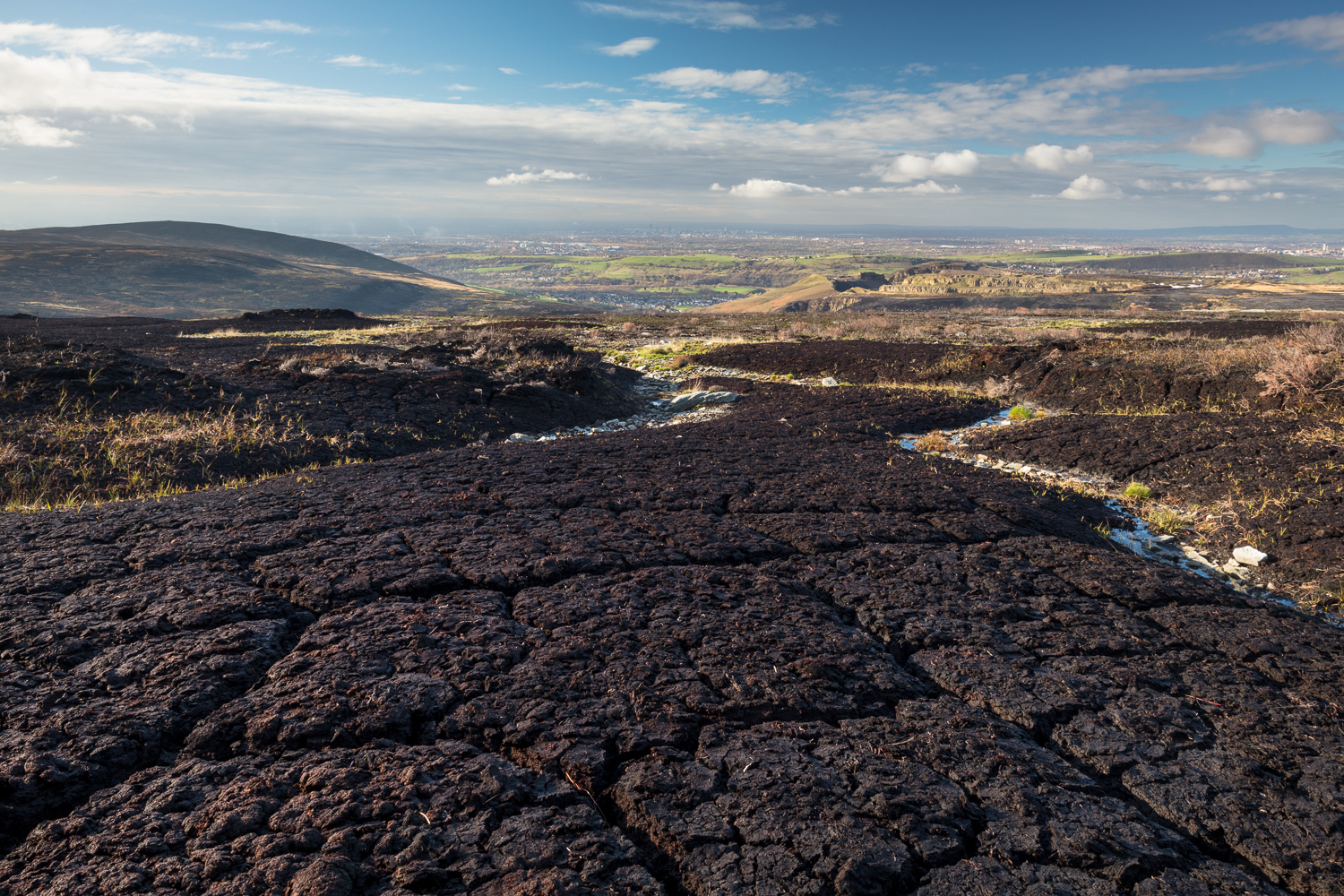
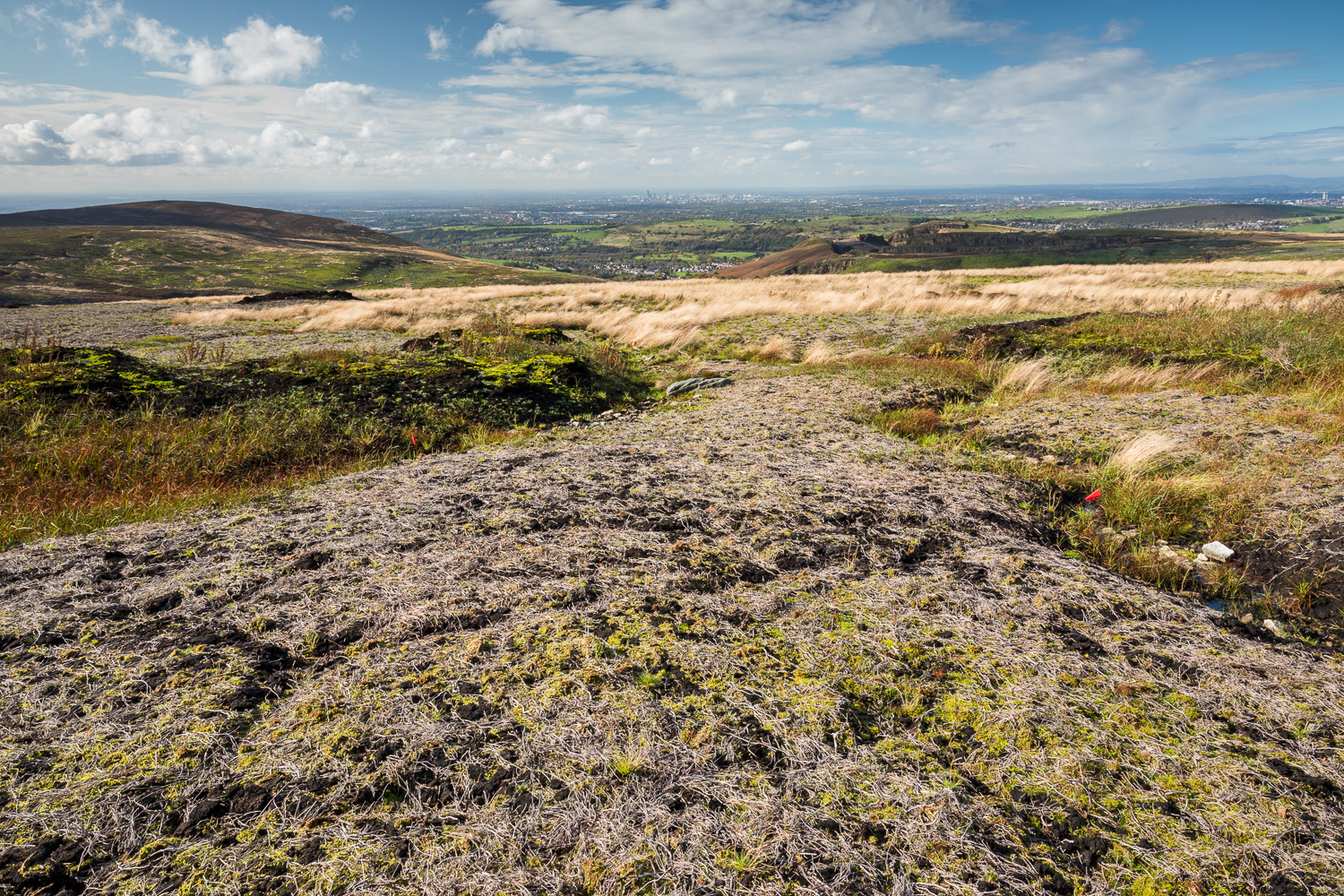
In the first photo, the area of exposed, bare peat is covered in heather brash (chopped up heather). A year later, green shoots of heather and grasses have emerged. Their roots help stabilise the peat, preventing erosion. The vegetation in the base of the gully is preventing erosion, and helping to slow the flow of water through the gully.
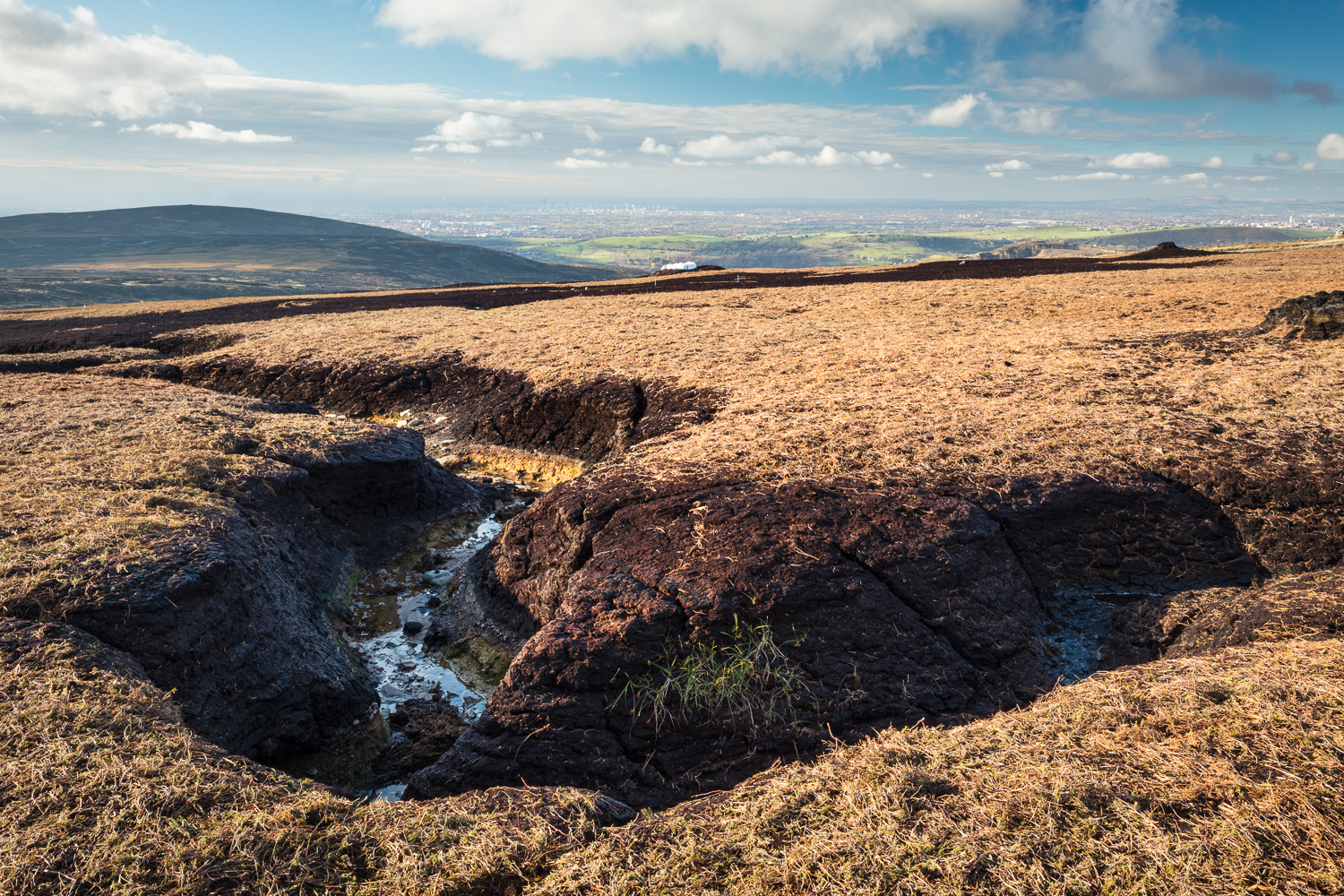
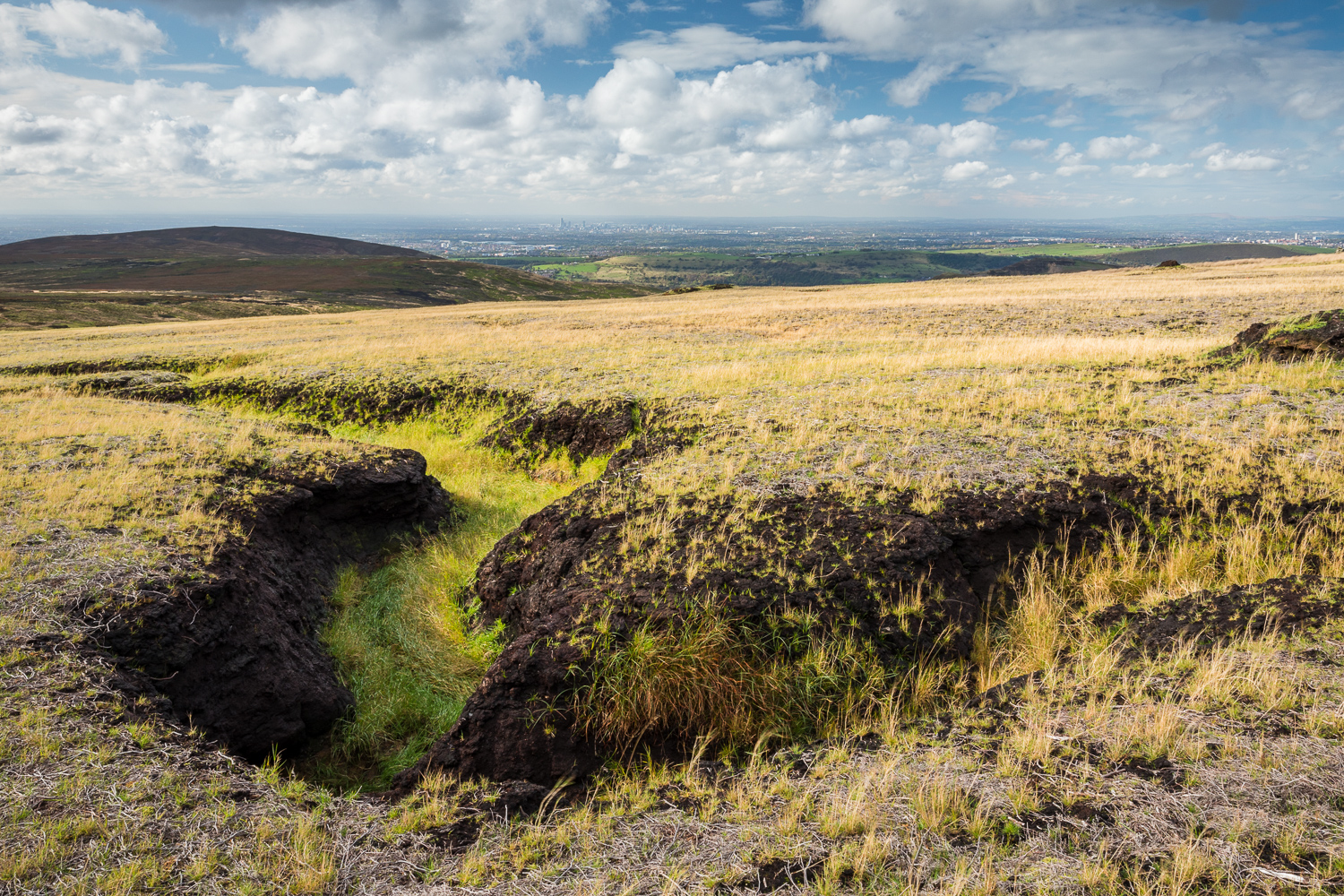
Manchester can be seen in the distance. Bare peat that is washed off the moor ends up in watercourses downstream. When it rains heavily, water flows quickly over the smooth surface. By establishing plants on the peat, erosion is less severe and the flow of water from the hills is slower.
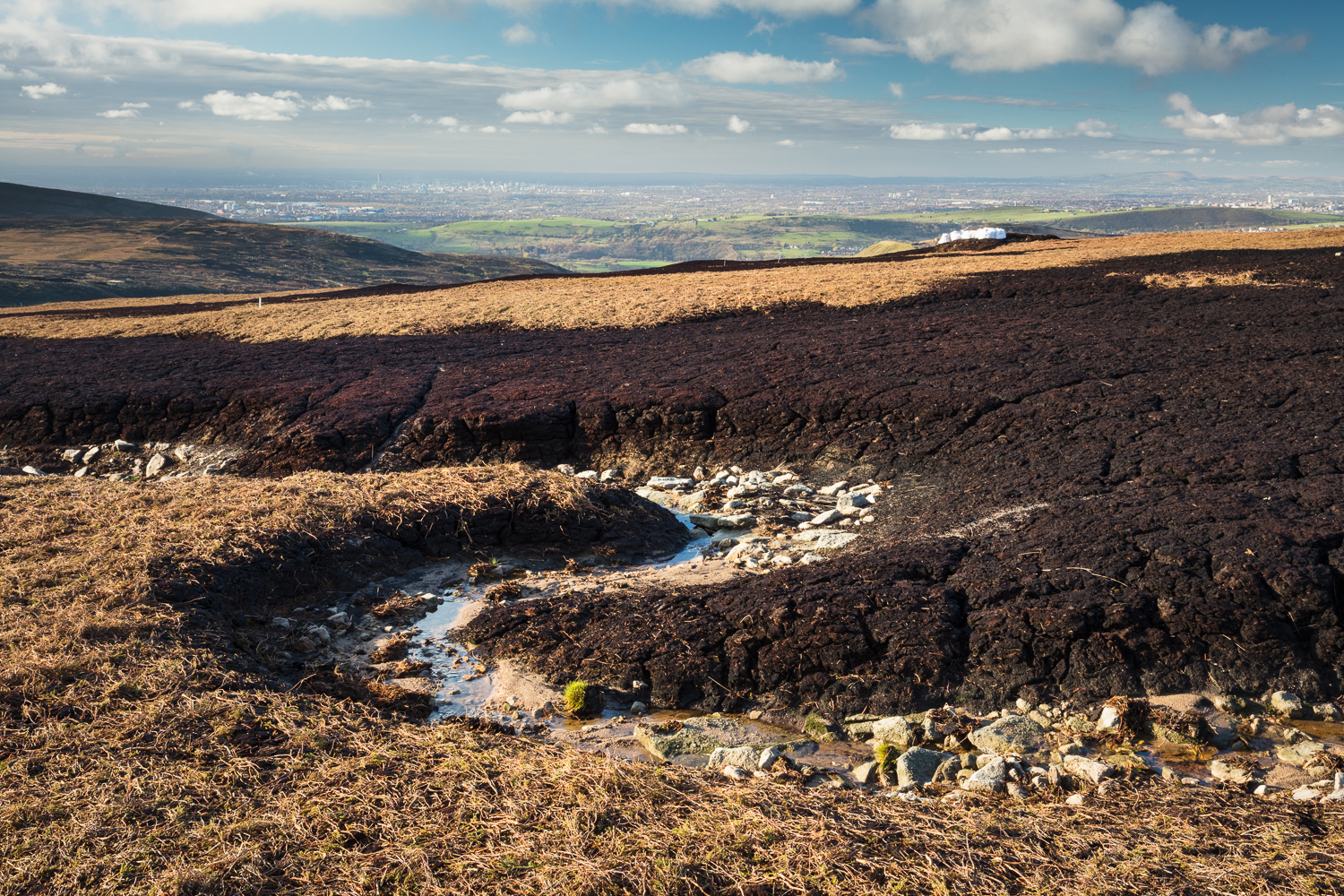
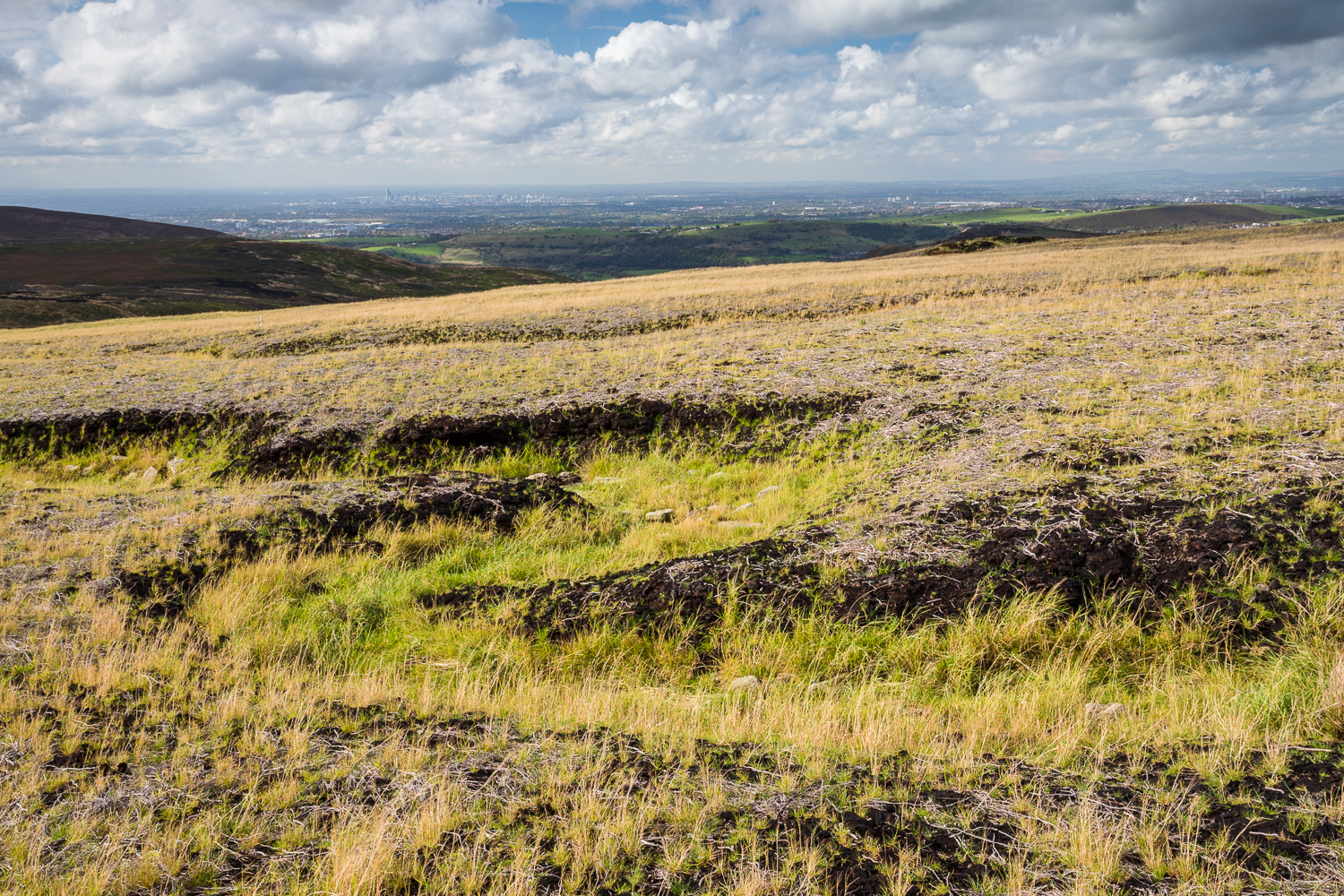
The scale of the work is evident in this photo. The large white dumpy bags contain heather brash, flown in by helicopter. The brash is harvested from other moors and spread out by hand, using pitchforks, to an exacting methodology.
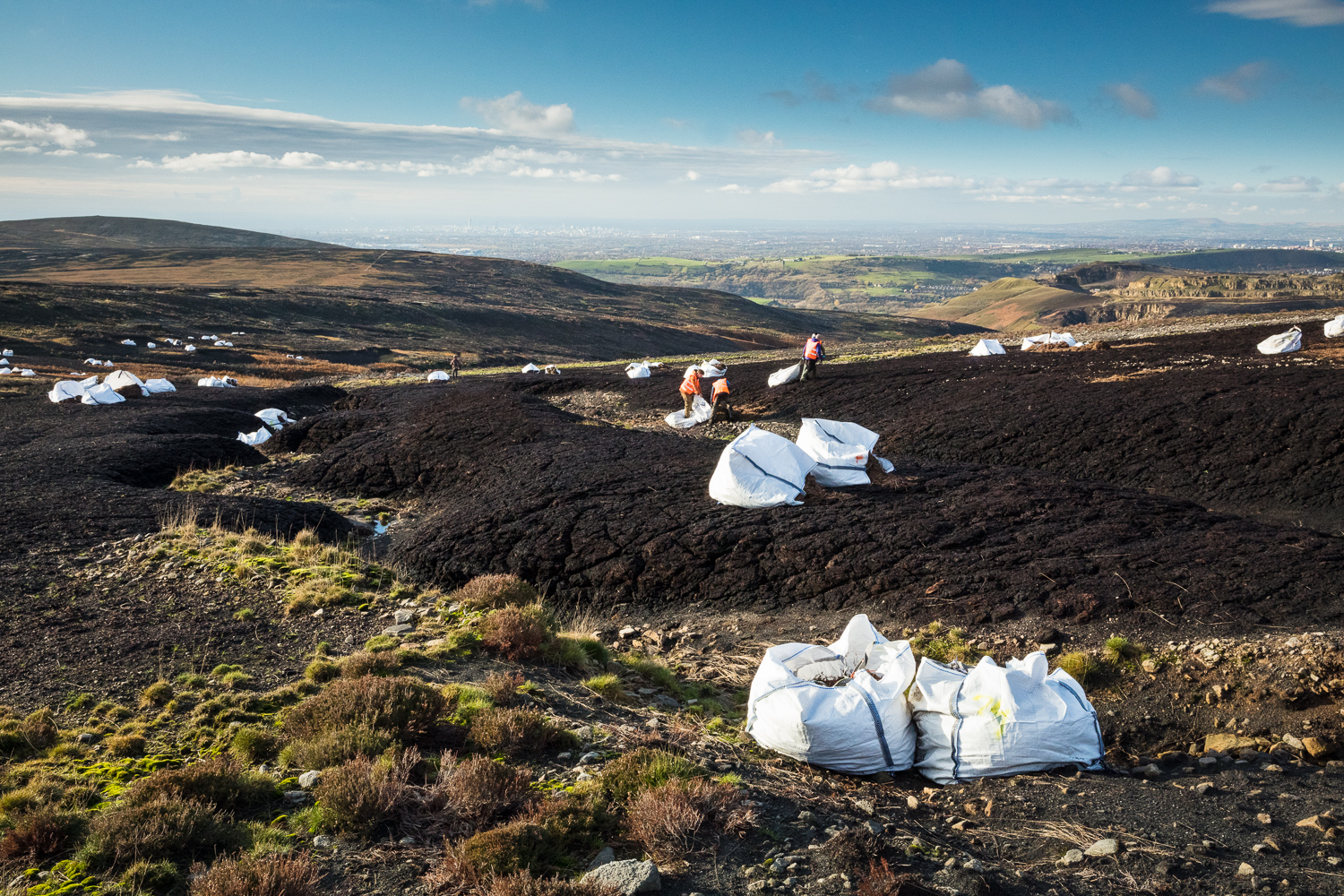
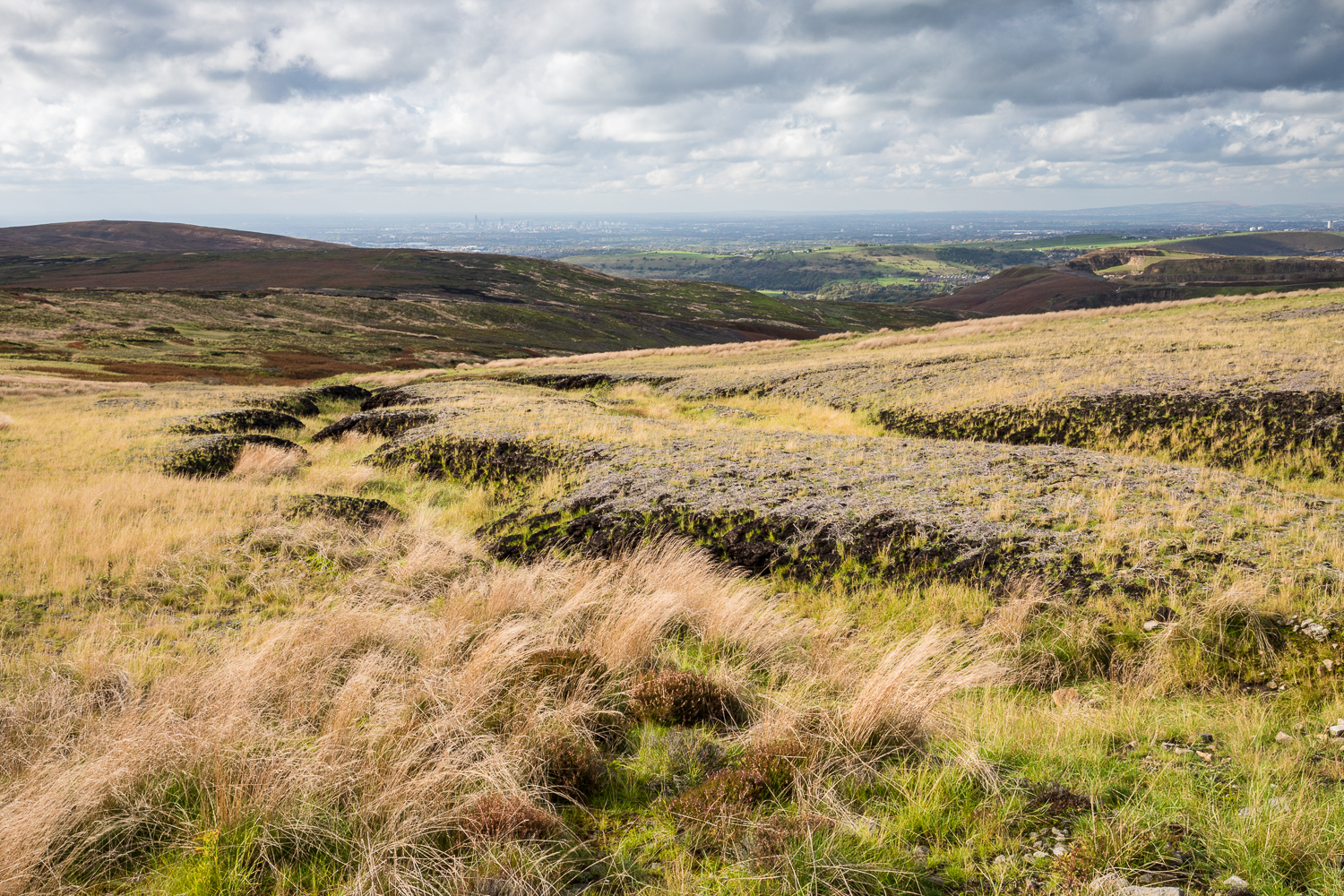
Sphagnum growing
These photos show annual the growth of sphagnum moss at our experimental site on Kinder Scout where sphagnum has been planted intensively. June 2018, June 2019 and July 2020
These photos show annual the growth of sphagnum moss at our experimental site on Kinder Scout where sphagnum has been planted intensively.
June 2018
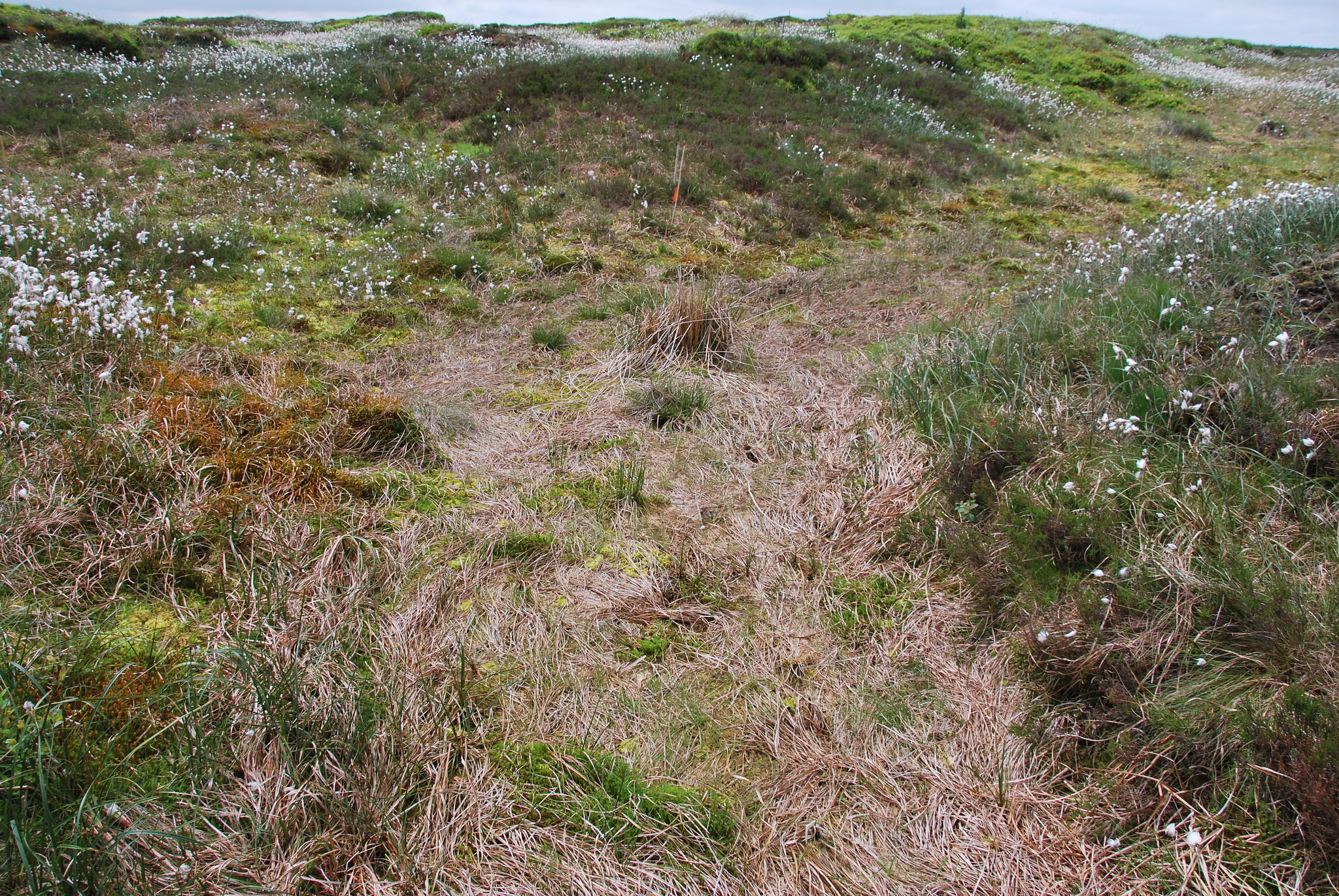
June 2019
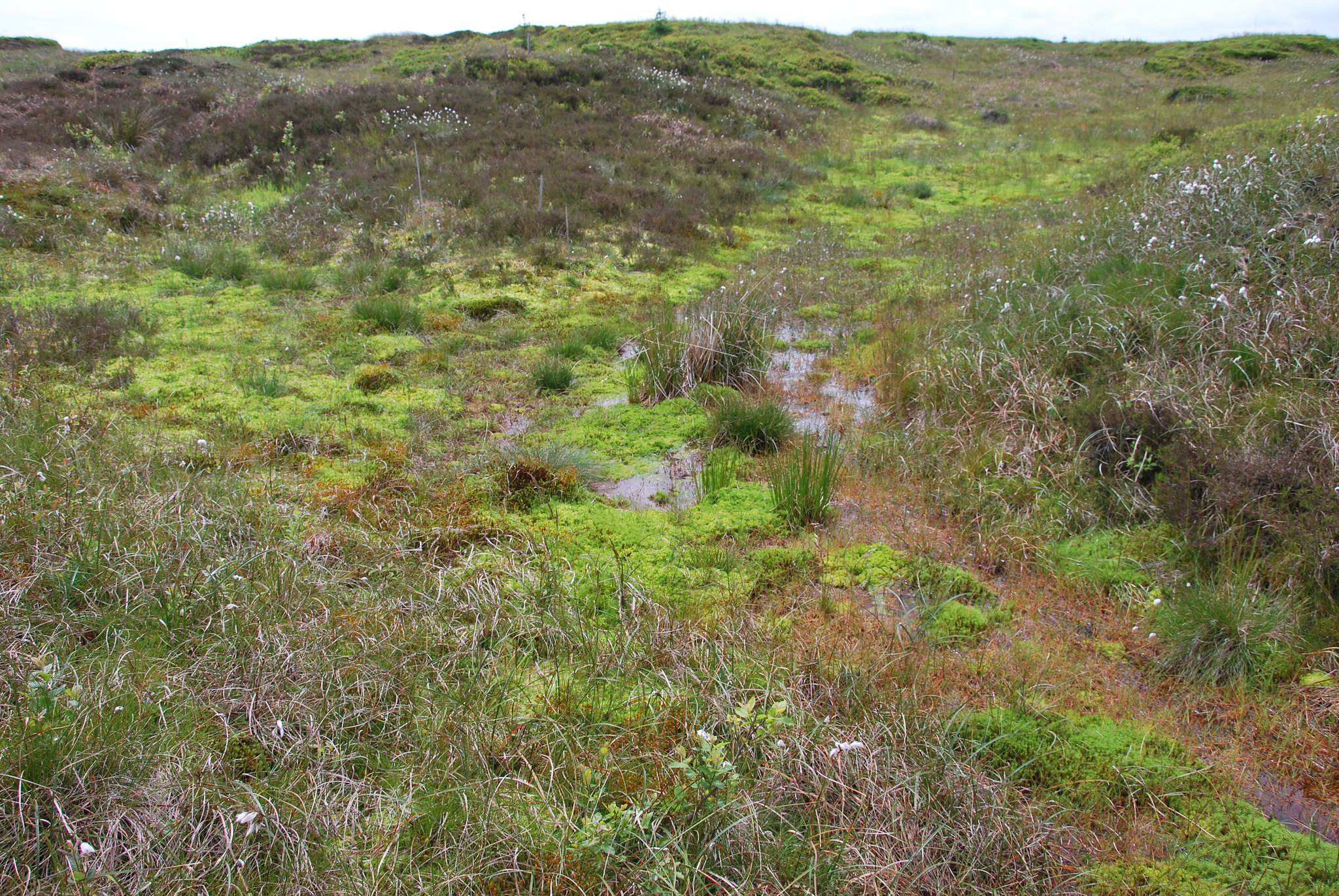
June 2018
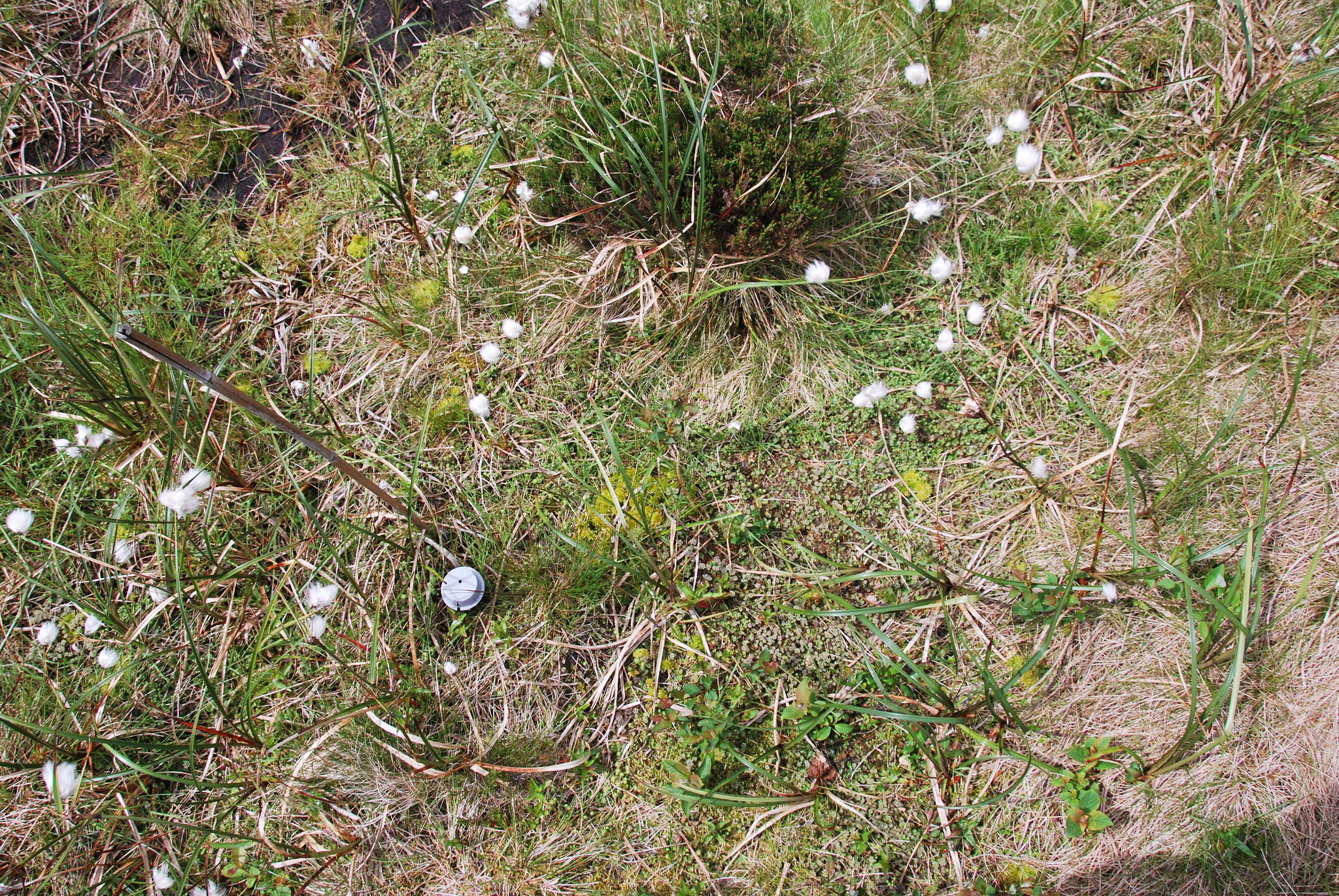
June 2019
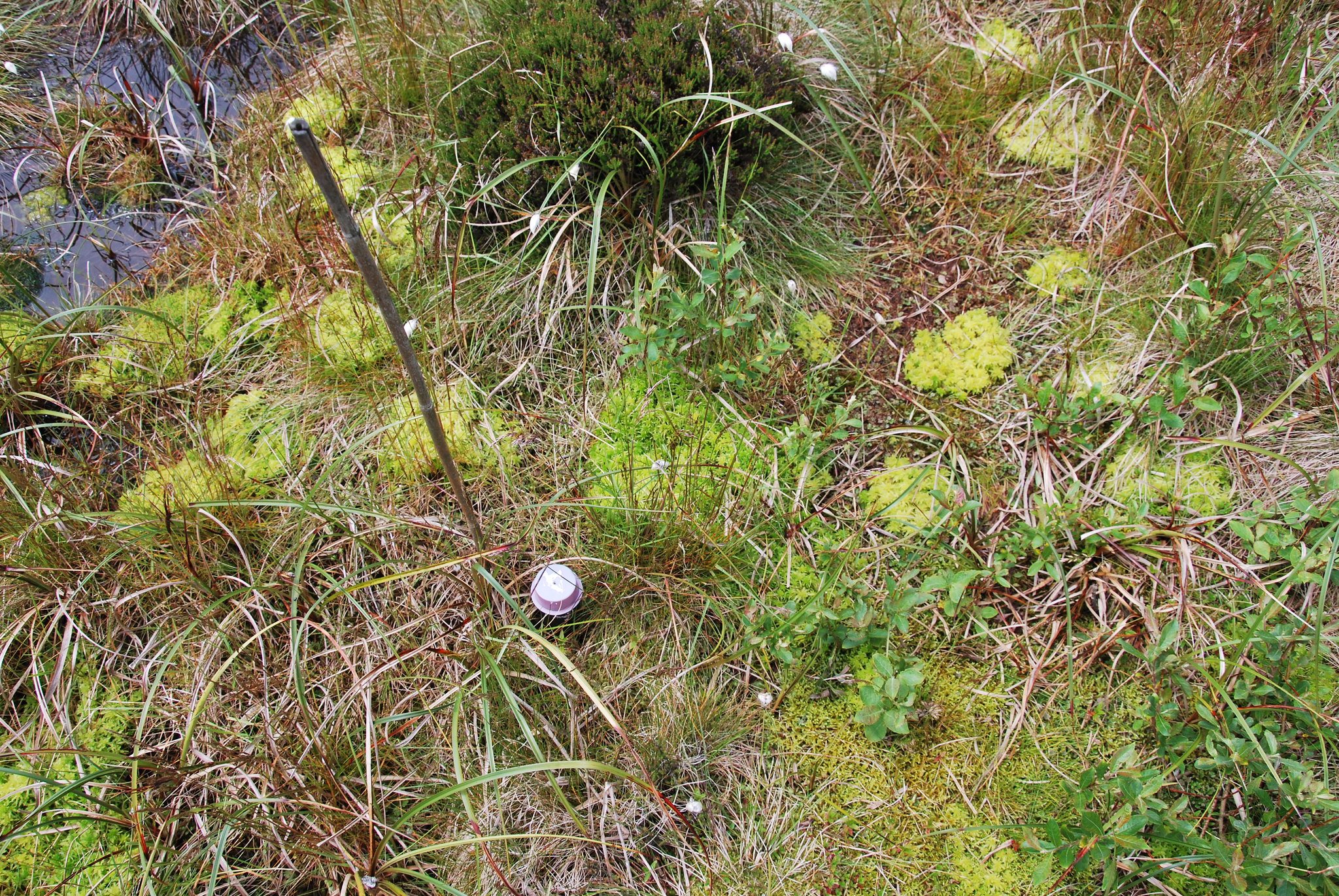
Kinder Scout
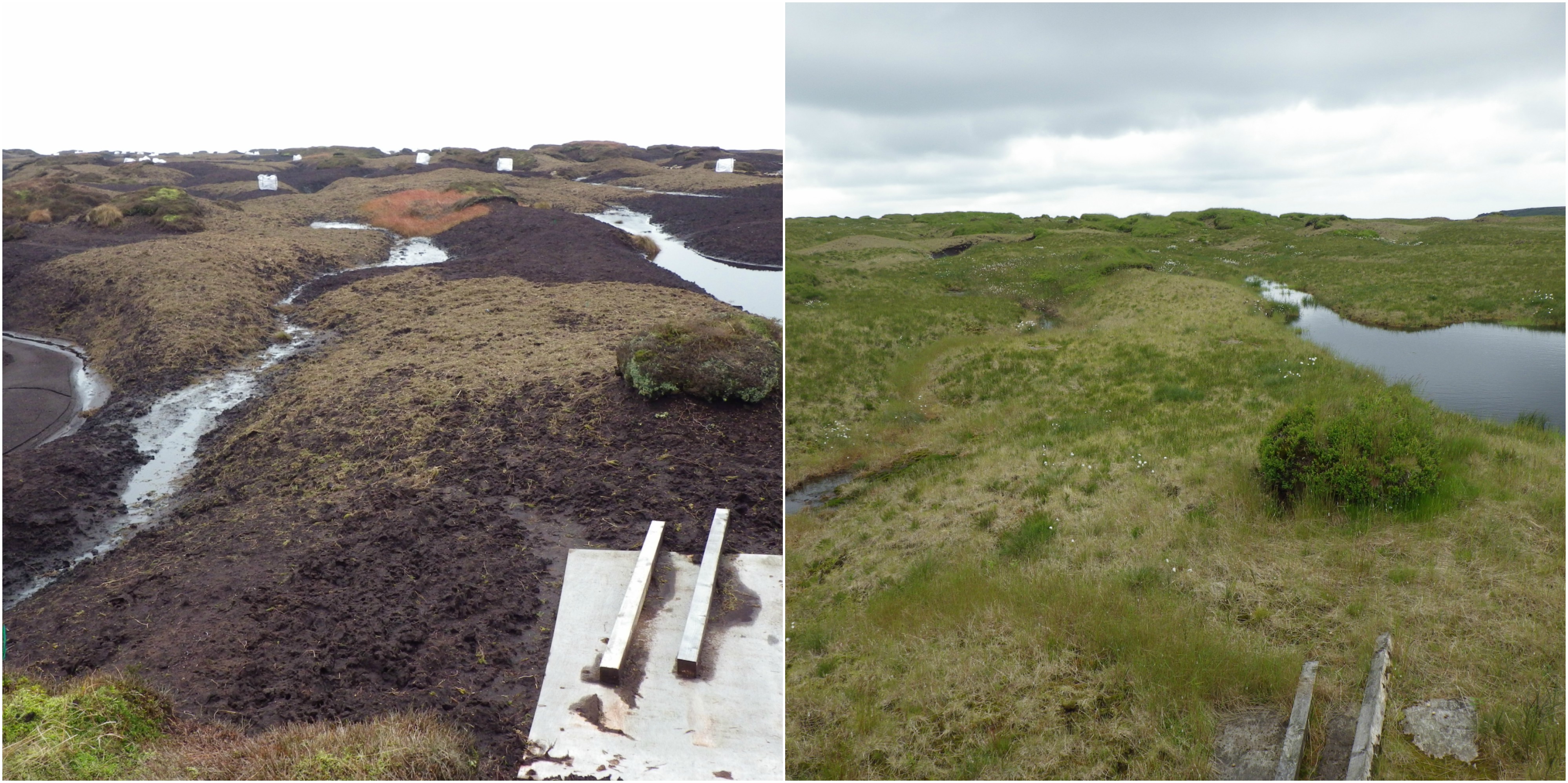
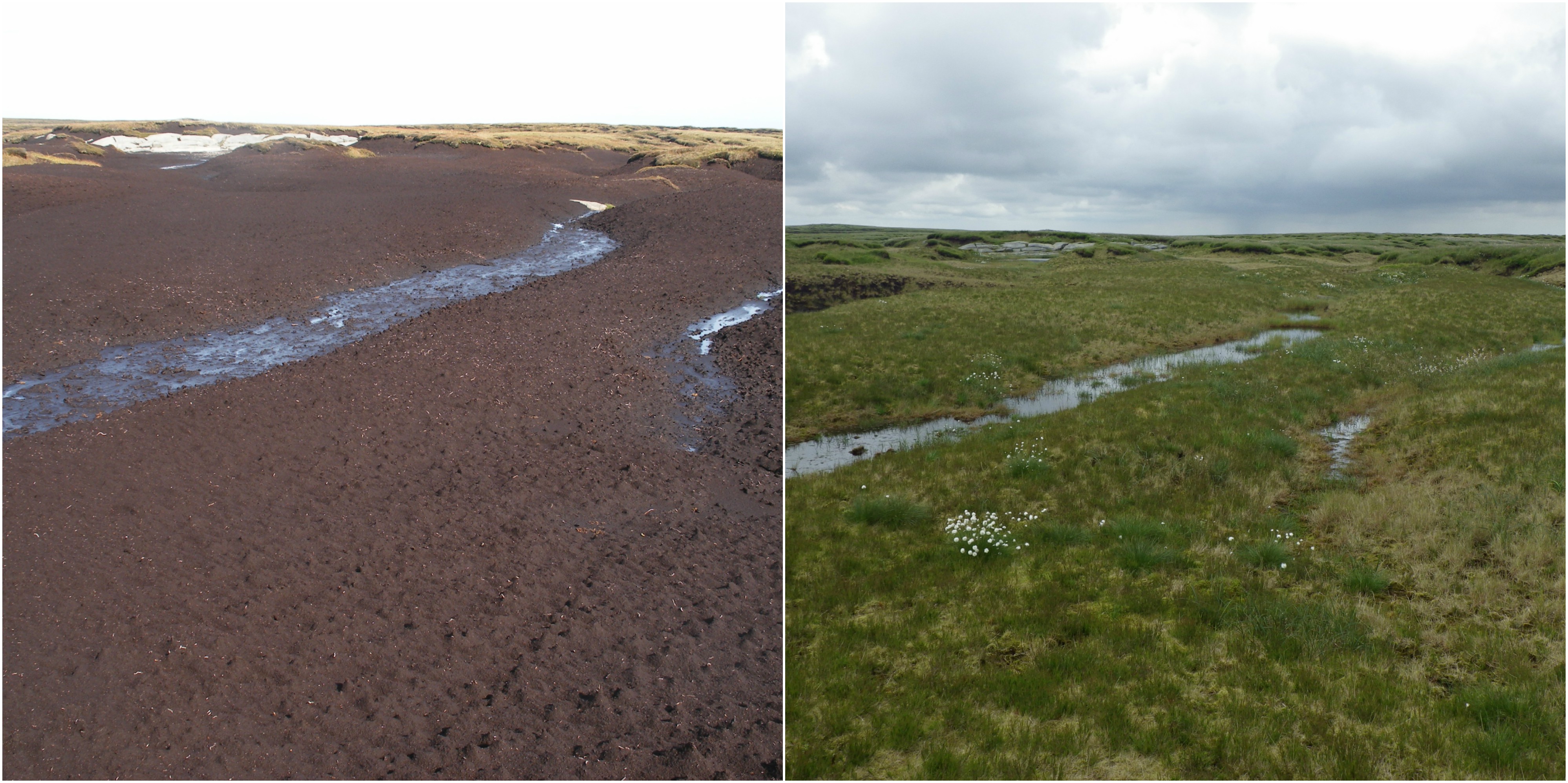
Black Hill ('Green Hill'?)
Black Hill in 2003 and 2011, with the cottongrass in full flower, and the trig point on the horizon. Black Hill is one of the first sites we worked on when the Partnership was founded in 2003.
